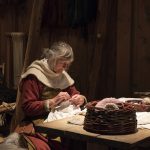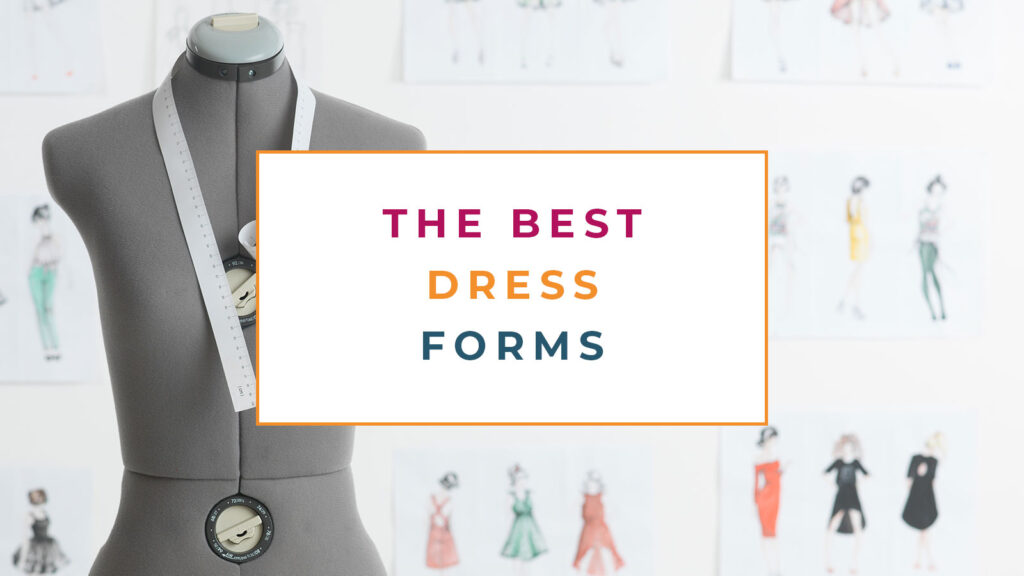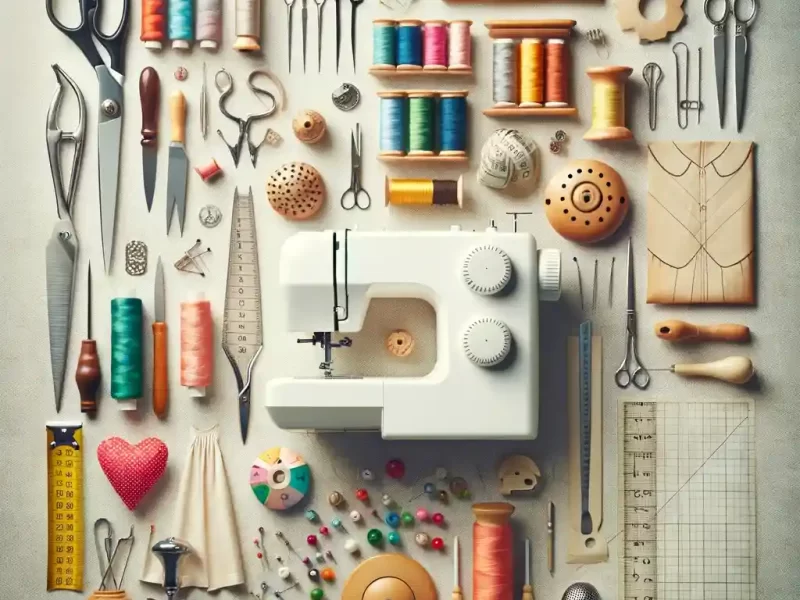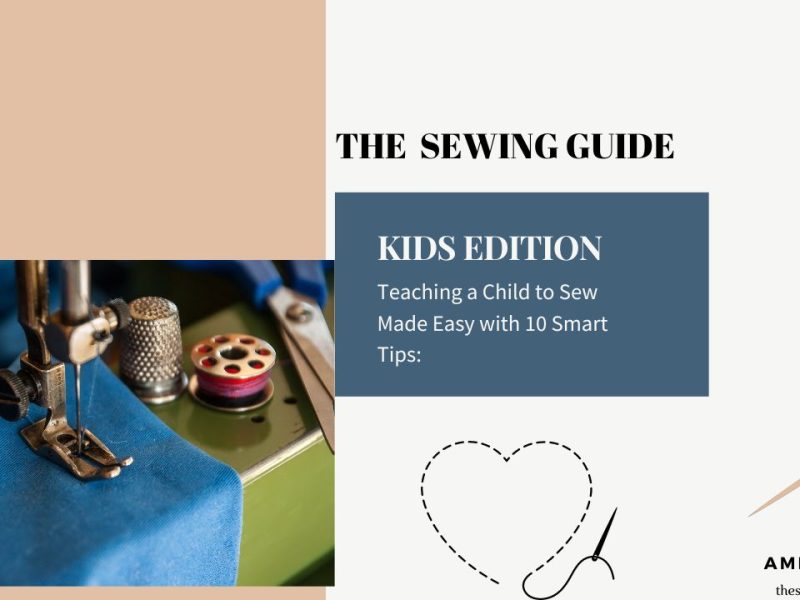Even though some simple items can be constructed with only a flat pattern, there are many occasions when a dress form can be quite helpful. A dress form can be of great assistance whether you’re trying to drape a garment, determine how well your flat pattern will fit, or just wish to adjust particular aspects of your garment, such as properly placing a sleeve.
Dress forms come in a wide variety of styles nowadays, ranging from simple plastic forms to intricate ones that can be adjusted to fit a wide range of sizes. They have been around for a very long time; one of the earliest is thought to be a wooden dress form from ancient Egypt that was discovered in King Tutankhamun’s tomb and used to showcase pieces of his lavish royal wardrobe.
Tips for Choosing a Dress Form
If you want to buy one for your usage, take into account the following:
- Simply said, whatever physique you are trying to reproduce is the first and perhaps most crucial question you should ask yourself while browsing for a dress form. You should look for a form whose measurements are the closest to your own if you are solely sewing clothing for your own body.
- Be careful that a dress form’s numerical number may not be at all the same as your clothing size. You should discover the right size form for your body, and make sure to accurately measure yourself.
- You might want an adjustable form or a form that can hold a set of pads that you can easily swap out to mimic various body forms if you are sewing for a large variety of people with different body types.
- You can always add padding to a form to make it bigger, but there is nothing you can take away to make it smaller than its smallest size, thus it is always preferable to err on the side of smaller size.
In light of all of this, there are several distinct kinds of dress forms to look for. From tiny babies to very heavy adults, dress forms are available for practically any size body, and more size ranges seem to be introduced every year.
Types Of Dress Forms For Sewing:
- Self-Made Dress Forms:
Making one yourself is another choice for a personalized dress form. Online instructions abound that can show you how to create your form based on your physique using everything from duct tape to spray foam to Papier-Mâché.
While some of these patterns and methods might survive longer than others, most do-it-yourself dress forms won’t hold up to use over time as well as one that has been expertly crafted.
To tide you over until you can afford the dress form you want if you’re in a bind, it’s a choice that might still be worth considering.
- Traditional canvas-covered dress forms used by professionals:
The canvas or linen-covered heavy-style form is arguably the most conventional sort of dress form for creating garments. These are the ones that are most usually used in professional tailoring and dressmaking businesses, as well as in businesses that produce costumes.
Wolf, Superior, and PGM are three of the most popular brands for these, but numerous other businesses produce canvas forms of a high caliber
Typically, strong cardboard or other types of fiberboard are used to create dress forms, which are then wrapped in batting or a thin layer of foam, canvas, or linen. Typically, they have sturdy metal bases with casters that let you move them anywhere you need to. Although this kind of shape is not size-adjustable, it is available in a wide range of sizes.
The ability to attach fabric, trim, or patterns to them with pins for simple draping and finishing is a major bonus, though depending on the underlying materials, you might need to angle your pins for them to retain fabric securely.
The cost of canvas dress forms may be higher than other types of dress forms depending on the qualities you require, but with good maintenance, they may last a very long time and be mended and recovered more simply.
- Pinnable Dress Forms :
A foam dress form can be an option if you’re searching for a more affordable dress form that you can pin into. Despite being generally more lightweight than canvas shapes, these foam ones are still durable.
They ‘give’ somewhat when people sit on them because they are constructed of foam, and some have cloth covers to shield the foam from harm. The ability to pin directly into your form at any angle is another advantage of foam. A good quality foam dress form will last you quite a while if you take excellent care of it, but depending on the type of foam used and how frequently they are used, these forms may not last as long as the canvas variety.
- Adjustable Dress Forms:
Although they are adaptable in terms of size, adjustable dress forms do have some restrictions. These frequently contain several panels that may be spread apart or brought together using dials, giving them some degree of customization. Some of them allow you to modify the length as well as the girth, which is useful if you require a form with a longer torso than the average.
Adjustable dress forms are frequently made of lightweight plastic, which makes them portable but, depending on the quality, can also make them a little flimsy. These kinds of forms also have the drawback that, after the dials are turned to enlarge the form, a gap appears between the panels that are tough to pin into.
It could be challenging to pin into any portion of the form, depending on the covering applied over the plastic. An adjustable form, however, can be a perfect choice for you if you’re looking for a reasonably priced form that can fit people of different sizes and you don’t need to pin a lot of things into it.
- Display Forms:
Finally, there are several high-quality display forms available if you’re seeking a dress form that is only intended for exhibition. These are occasionally more stylized than those used for sewing and are typically lighter in weight than the majority of fabrics used in dressmaking and tailoring. Depending on what you’re looking for, they may also be considerably less expensive. A display form may be ideal for your needs if all you want is a pretty form to showcase a garment. They are typically less suitable for draping or inserting pins to add the trim.
- Small-sized Forms:
Using a tiny form that is proportionate to a regular-sized form is a useful tool for designing clothing.
When designing clothing, this can be a practical way to test out new patterns or draped designs without requiring as much paper or fabric as a large-sized dress form would. They are frequently sold at a scale that is half that of a typical dress form. These small-sized forms are a fantastic, cost-effective alternative in terms of both size and pricing, and they would make an excellent addition to a regular dress form in your atelier.
- Personalized Dress Forms
Nowadays, duplicating oneself is more exact than purchasing a form in a standard size and attempting to modify it to fit your unique shape. Dress forms can be produced to order by a variety of businesses using your measurements. Even more intriguing, some businesses can use sensitive laser scanning equipment to scan your body and use the results to create a personalized form just for you.
The market for scanned bespoke forms is being entered by firms like Beatrice Forms, Ditto Forms, and others. One of these custom forms might be ideal for you if you only sew clothing for yourself and your body does not change much over time. Custom forms are generally more expensive than the other types, which is perhaps not surprising.
Additional Components To Take Into Account:

Collapsible Shoulders:
A dress form with collapsible shoulders is another incredibly useful feature. You can start to understand how useful it would be to have those shoulders be able to collapse in if you’ve ever tried to wriggle a silky bias dress over the huge, inflexible shoulders of a regular dress form. With a soft foam form, this is less of a problem, but if you wish to use a stiffer canvas-covered form and are dealing with clothing that has small necklines or slim circumferences, foldable shoulders can help you avoid some frustration.
Legs:
These types of dress forms, sometimes known as bifurcated dress forms, have legs, or at the absolute least, a crotch and thighs. When making pants or leggings, these can come in quite handy because it is very difficult to obtain a pair of trousers on a conventional dress form that is supported by a regular stand.
Looking at the leg possibilities can be a good idea if you anticipate making plenty of pants. They frequently come with a hanging stand that allows for the removal of the entire “body” of the form if necessary, however, some only have a stand that passes through one thigh and can be removed to dress the form.
Variable Height:
You might want to seek a dress form that can be raised and lowered if you work with long gowns that require a little extra height to clear the floor or if you are simply tall. This feature is present on a large number of forms with cast-iron bases, and it is especially useful for fastening the hems of long gowns.
The flexibility to lower your dress form can also be useful if you are shorter than average or prefer to work while seated on a stool. Additionally, there are dress forms designed to be placed on a tabletop. Shirts and blouses are extremely portable and quite adaptable but have some limitations without a stand to drape or work on longer clothes.
Additional Limbs
Frequently, dress forms have their sleeves hacked off and lack a true shoulder curve. Some people just have a small shoulder and a weak arm. There are several ways to get a whole arm to assist with your job. You can add arms from businesses that sell pin-on limbs if you have a dress form that you can simply pin onto.
Some kinds even have flexible arms. Other dress forms have an armscye slotted structure that enables a matching arm to slide in safely. Others still have the option to add magnet-mounted arms. You can always create your own out of a robust fabric and filling if you want to save some money or if you need a very specific arm or leg shape that isn’t offered commercially.
Padding
As we said before, padding out a non-adjustable form to greater sizes than the form itself is an excellent method to make it more flexible for a variety of sizes. A few businesses produce sets of pads that can be added to your form as needed to increase its dimensions. Fabulous Fit, which also manufactures dress forms, is one of the most well-known of these.
While you might be able to simply pin pads on to achieve the desired shape and size, it’s better to also cover them in a stretch fabric to eliminate any lumpiness and bring the form and padding together into a single coherent unit. And it’s amazing what you can make with a few bags of fiberfill and some stretch fabric to cover it if money for professional padding is not in your budget.
Conclusion:

So, before asking yourself this very important question, which dress form is best for you? I would suggest you read a little bit more about all the dress forms available out there. Once you know what type is your best choice, you’ll be in a better position to pick the one that suits your needs. Once you know all of your options you’ll see how choosing one for yourself becomes an easier matter.

I love sewing, I am sewing for the last 15 years and started this blog with the help of my niece to spread sewing-related guides all over the world.
Sewing could be a full-time profession or hobby, and I wish to make a change by adding more people to the sewing world.


